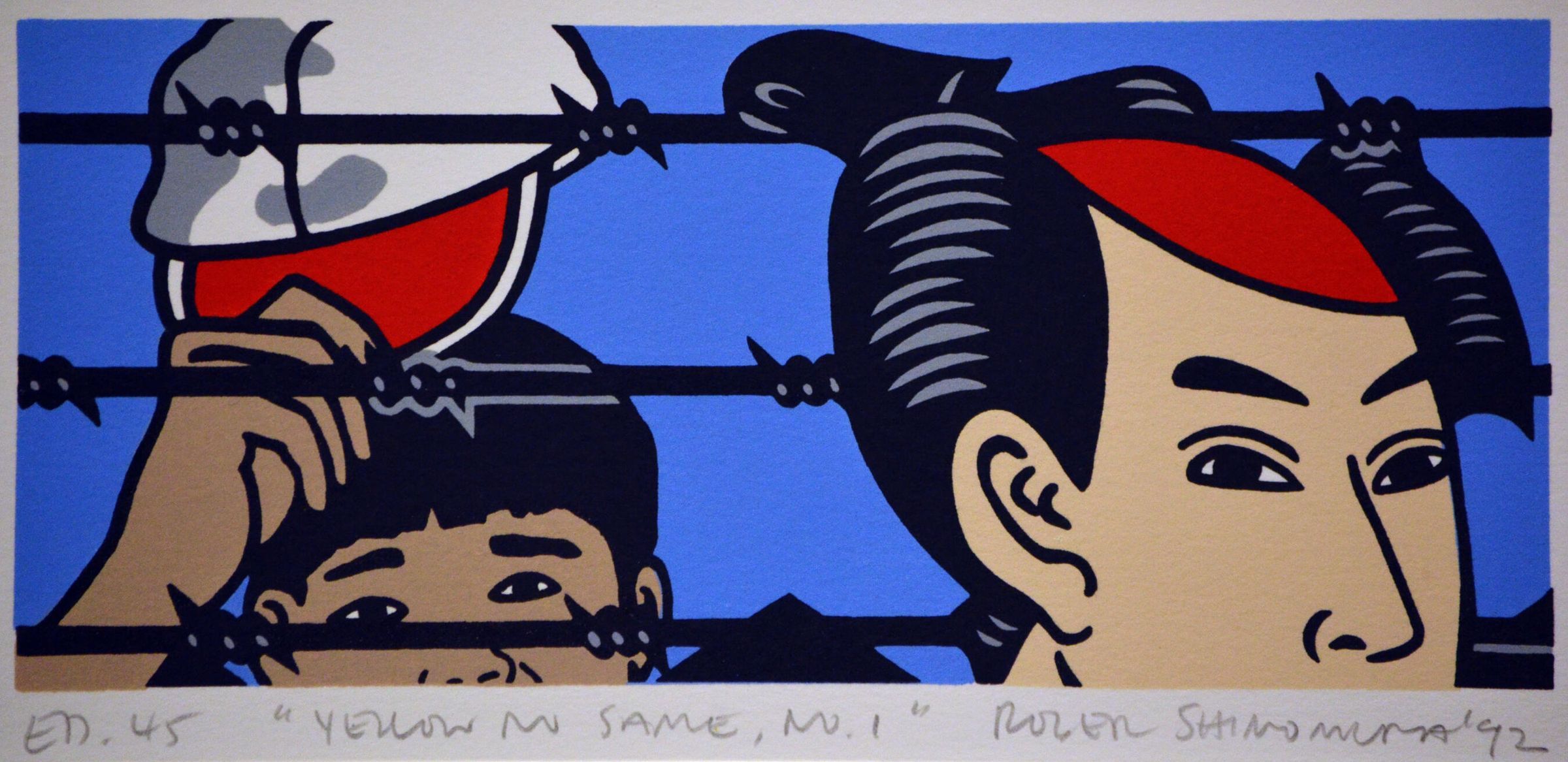Label
Roger Shimomura’s Yellow No Same, is one of a series of twelve lithographs which explore conflicting identities. The prints depict actors from traditional Japanese woodblock prints and modern Asian characters, separated by barbed wire. The modern figures behind the barbed wire represent racist stereotypes: Asian children as token characters in American TV and Film, Tiger Moms, and communist soldiers. The entirety of the series presents the struggle Shimomura personally experienced existing amongst Western stereotypes as his authentic self.
Shimomura’s family was imprisoned in an American internment camp along with approximately 127,000 others in the United States after the Japanese attack on Pearl Harbor in 1941. The U.S. Government reduced second or third-generation Japanese American citizens to people having “Japanese ancestry,” regardless of their respective American identities.Label
Label from 2014.Art for Social Change:
Despite the fact that he was a third generation Japanese-American, Kansas University emeritus art professor Roger Shimomura and his family were interned in one of the concentration camps for people of Japanese descent that were opened after the attack on Pear Harbor in 1942. This suite of prints thus explores the inability of Americans to distinguish between Japanese nationals and U.S. citizens. The actual title refers to the artist’s high school experience of Japanese American students chanting “Yellow No Same” to indicate that they were not the same as the Chinese American students.
In these twelve works, Japanese persons stereotyped as Kabuki actors stand on one side of a barbed fire fence. With traditional face paint, hairdos, and weapons, they are stylized in the manner of eighteenth and nineteenth-century Japanese woodblock prints. Behind the barbed wire, in contrast to the actors, are Japanese Americans, who are themselves stereotypes of “average” Americans with baseball and cowboy hats, pigtails and contemporary American dress and hairdos. In their stylized, flattened forms, bright color, and lack of three-dimensional space, these works demonstrate the influence on the artist of both American Pop Art of the 1960s and Japanese woodcuts, the popular art of their day. This irony was not lost on Shimomura.Label
Titled "Yellow No Same" the works in this exhibition illustrate the double-sided prejudice on the part of many Americans which presumes that, while all Asians are either the same or indistinguishable from each other, all Asian-Americans are not the same as other Americans. Each of these images represents memories from Shimomura's experience as a young child when he and his family, along with other Japanese-Americans, were interned in the Minidoka camp in Idaho during WWII. Separating the figures are lines of barbed wire silhouetted in black. Shimomura's art reflects the artist's fascination for the comparison of American and Japanese cultures. "To most non-Asians in this country, the differences between the Japanese, Chinese and other Asian people are either indistinguishable or immaterial. During World War II this insensitivity was expressed by their failure to recognize the differences between the Japanese people and Americans of Japanese descent. Today, history is being formed to admit the gravity of this error in judgment-Yellow No Same."Label
2022, Whose America?
Yellow No Same is a series of twelve lithographs that explore conflicting identities. The lithographs depict actors from traditional Japanese woodblock prints and Japanese Americans separated by barbed wire.
Shimomura and his family were imprisoned in an internment camp along with approximately 127,000 other Americans in the United States following the Japanese attack on Pearl Harbor in 1941. The U.S. Government designated second or third-generation Japanese American citizens as people having “Japanese ancestry,” regardless of their respective American identities.
Text by Jace Reeves, Washburn student
